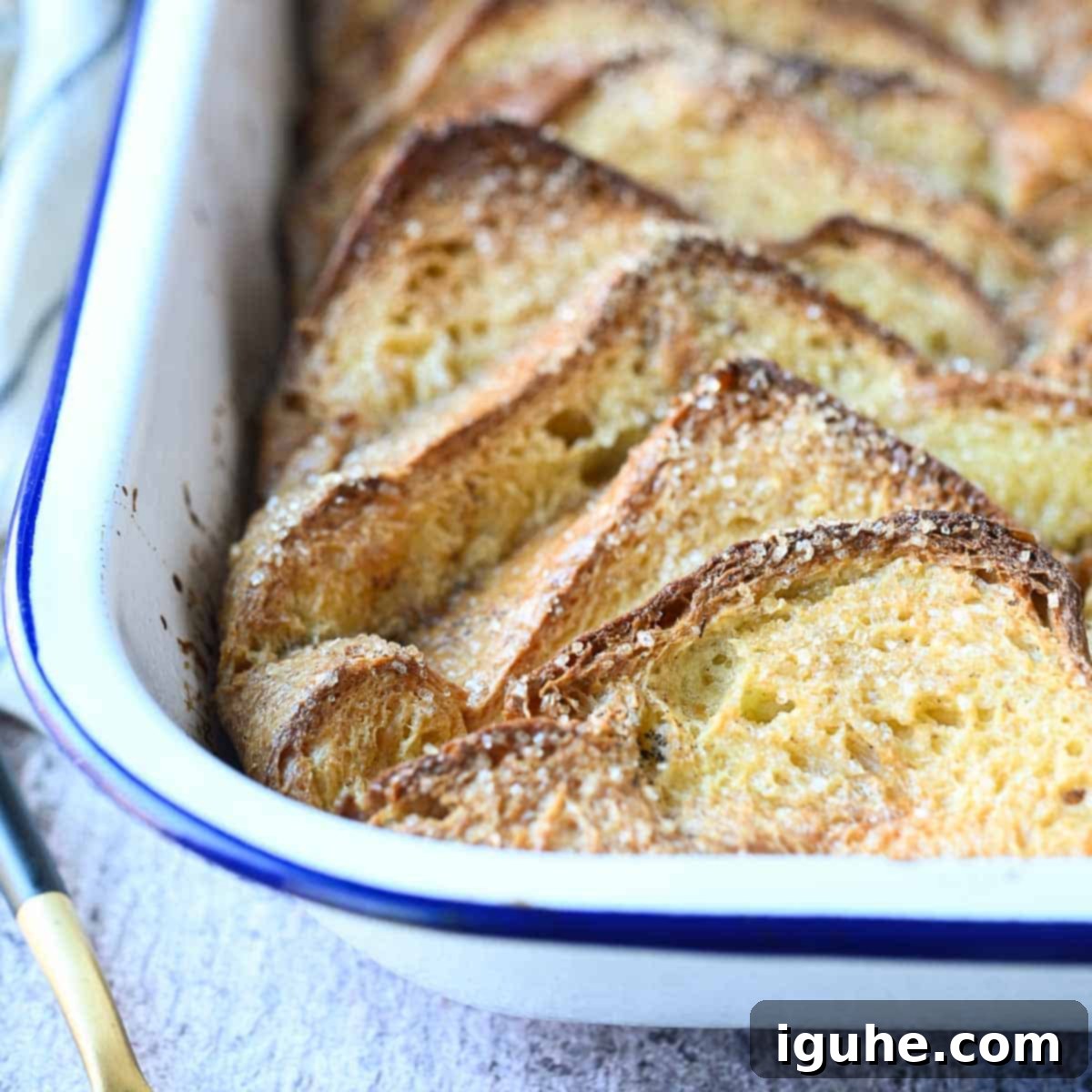Ultimate Overnight Baked Brioche French Toast Casserole: A Crowd-Pleasing Brunch Recipe
Prepare to elevate your brunch game with this phenomenal Baked Brioche French Toast Casserole! If you’re hosting a gathering, celebrating a special occasion, or simply craving a luxurious breakfast with minimal morning fuss, this recipe is your new best friend. Imagine thick, sweet, and buttery slices of brioche bread, lovingly soaked overnight in a rich, creamy custard, transforming into the fluffiest, lightest, and most indulgent French toast you’ve ever tasted. It’s the perfect centerpiece for Christmas morning, Easter brunch, or any time a celebration calls for something truly special.
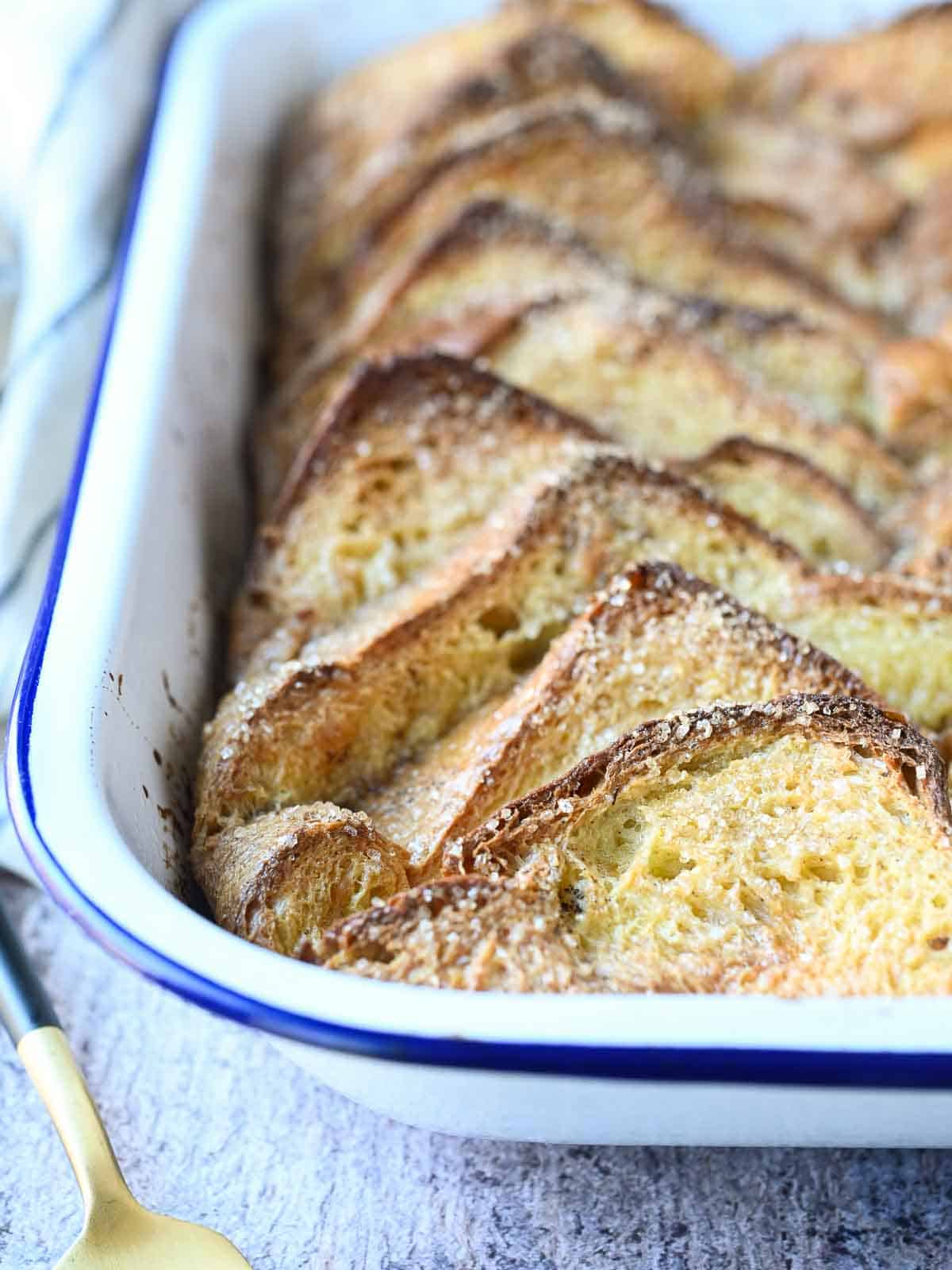
I’m certainly no stranger to the art of French toast. It’s a breakfast classic that’s wonderfully easy to master, incredibly versatile, and delightfully forgiving. Over the years, I’ve experimented with various breads and techniques, but one thing remains constant: I always reach for good quality brioche bread. The inherent buttery richness and soft texture of brioche not only stands up beautifully to the creamy custard but also absorbs it perfectly, leading to a consistently moist and flavorful result that other breads often can’t match.
Why Brioche is the Best Bread for Baked French Toast
Choosing the right bread is paramount for an exceptional French toast casserole, and brioche truly shines here. Its high egg and butter content gives it a naturally sweet, rich flavor and a tender, airy crumb. Unlike denser breads that can become heavy or soggy, brioche absorbs the custard mixture without collapsing, retaining its light and fluffy texture even after an overnight soak and baking. This creates a melt-in-your-mouth experience that is simply unparalleled. Other breads like challah or even a robust artisan loaf can work, but for that signature luxurious feel, brioche is the undisputed champion.
This particular baked casserole-style version is a magnificent hybrid, blending the best qualities of a comforting bread pudding with the beloved essence of French toast. What makes it truly special is its convenience: it’s all prepared in one pan, and the magic happens during an extended soak, from a few hours to a full overnight rest. This makes it an ideal make-ahead breakfast for busy mornings or when you want to impress without the stress. I particularly love slicing the bread diagonally; it not only creates a more elegant and inviting presentation but also allows for those delightful crispy edges on top. Pure yum!
[feast_advanced_jump_to]
Key Ingredients for Your Perfect French Toast Bake
You won’t find any fussy or exotic ingredients in this recipe, just simple components that come together to create something extraordinary. While fresh brioche bread will always elevate this casserole to gourmet status, the convenience of good quality store-bought brioche is perfectly acceptable and yields fantastic results every time.
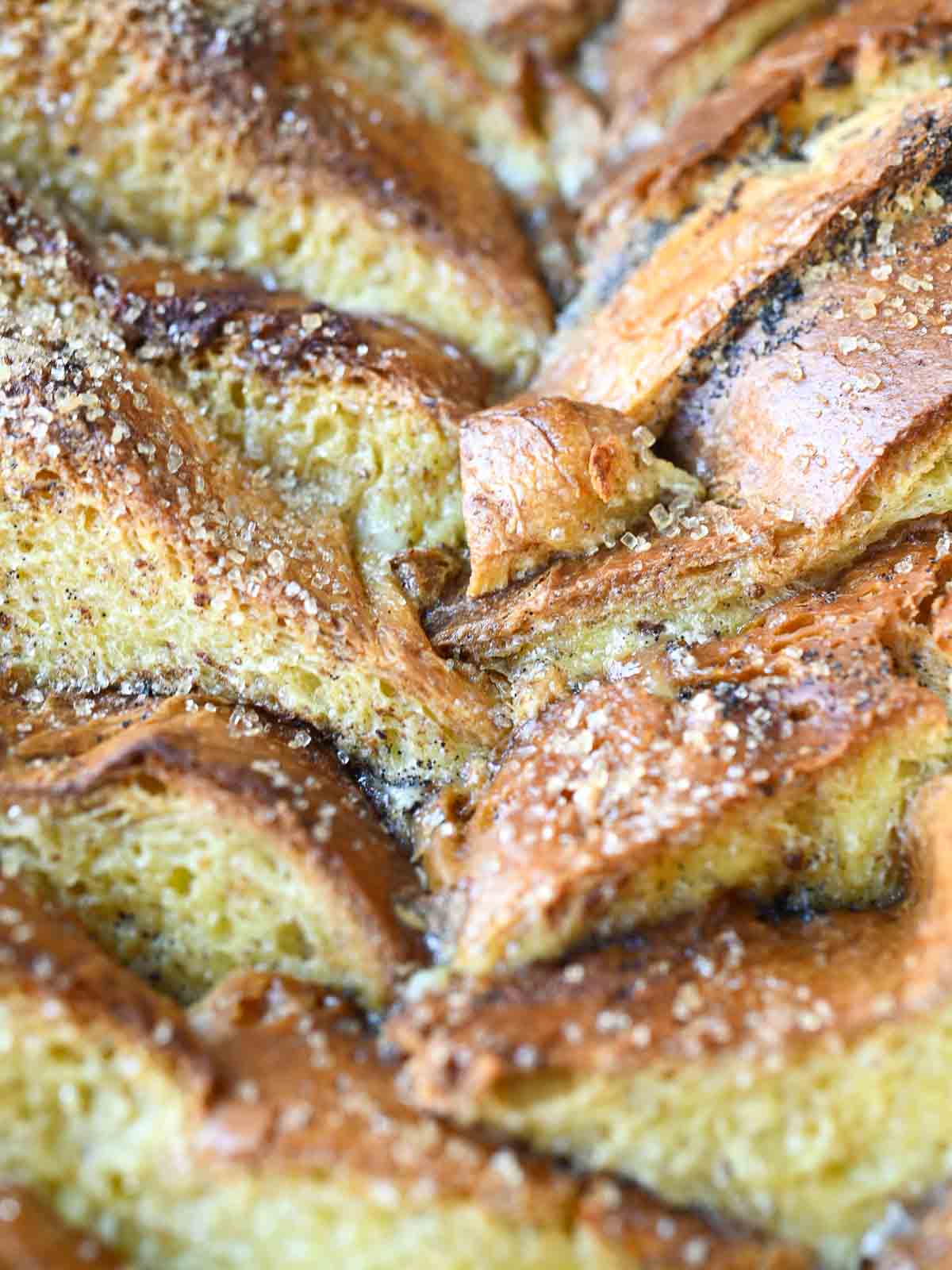
- Brioche: This is the star of our show! For an authentic and rich flavor, brioche is essential. My personal go-to brand (when I’m not getting it fresh from a local bakery) is Trader Joe’s in the U.S. Their slices are wonderfully thick and incredibly fluffy, perfect for soaking up the custard. St. Pierre’s is another widely available and popular brand that works exceptionally well. If you’re in a pinch, Sara Lee Artesano Brioche and Aldi’s Specially Selected Brioche Loaf are also excellent choices that deliver on texture and flavor. The key is to look for thick slices; most store-bought loaves are around 17.6 ounces, and I usually remove one or two slices to get the ideal bread-to-custard ratio for a 9×13 pan. Slightly stale bread works best, so consider leaving it out overnight or giving it a quick toast.
- Eggs: These are the foundation of our creamy custard. Large eggs provide the necessary structure and richness, binding all the ingredients together and giving the French toast its signature silky interior and beautiful golden color.
- Half and Half: This ingredient is the secret to achieving perfectly rich French toast without it feeling overly heavy. Half and half strikes a wonderful balance between creaminess and lightness. You can certainly substitute with whole milk for a slightly less rich version, or combine whole milk with a splash of heavy cream for an extra indulgent touch.
- Sugar: We use white granulated sugar in the custard to provide essential sweetness that balances the richness of the brioche and eggs. For that irresistible, crunchy, caramelized top, a sprinkle of turbinado sugar (often labeled “Sugar in the Raw”) before baking is absolutely crucial.
- Vanilla: Vanilla extract or, even better, vanilla bean paste, adds a warm, aromatic depth that complements the other flavors beautifully. Don’t skimp on good quality vanilla; it makes a noticeable difference.
- Spices: A thoughtfully chosen blend of warm spices transforms the custard from simply sweet to wonderfully complex. A mix of ground cinnamon, earthy cardamom, and a hint of freshly grated nutmeg imparts a cozy, inviting aroma and flavor that screams comfort and celebration. These spices are especially perfect for holiday brunches.
- Butter: Essential for greasing the baking pan, ensuring your magnificent casserole doesn’t stick and slides out beautifully for serving. A thin layer also adds to the overall rich flavor profile.
Easy Steps to Your Delicious Baked Brioche French Toast
Crafting this baked brioche French toast is straightforward and rewarding. Remember to generously butter your baking pan right at the beginning to prevent any sticking. The full, detailed instructions are conveniently located in the recipe card below, but here’s a quick visual overview to guide you through the process.
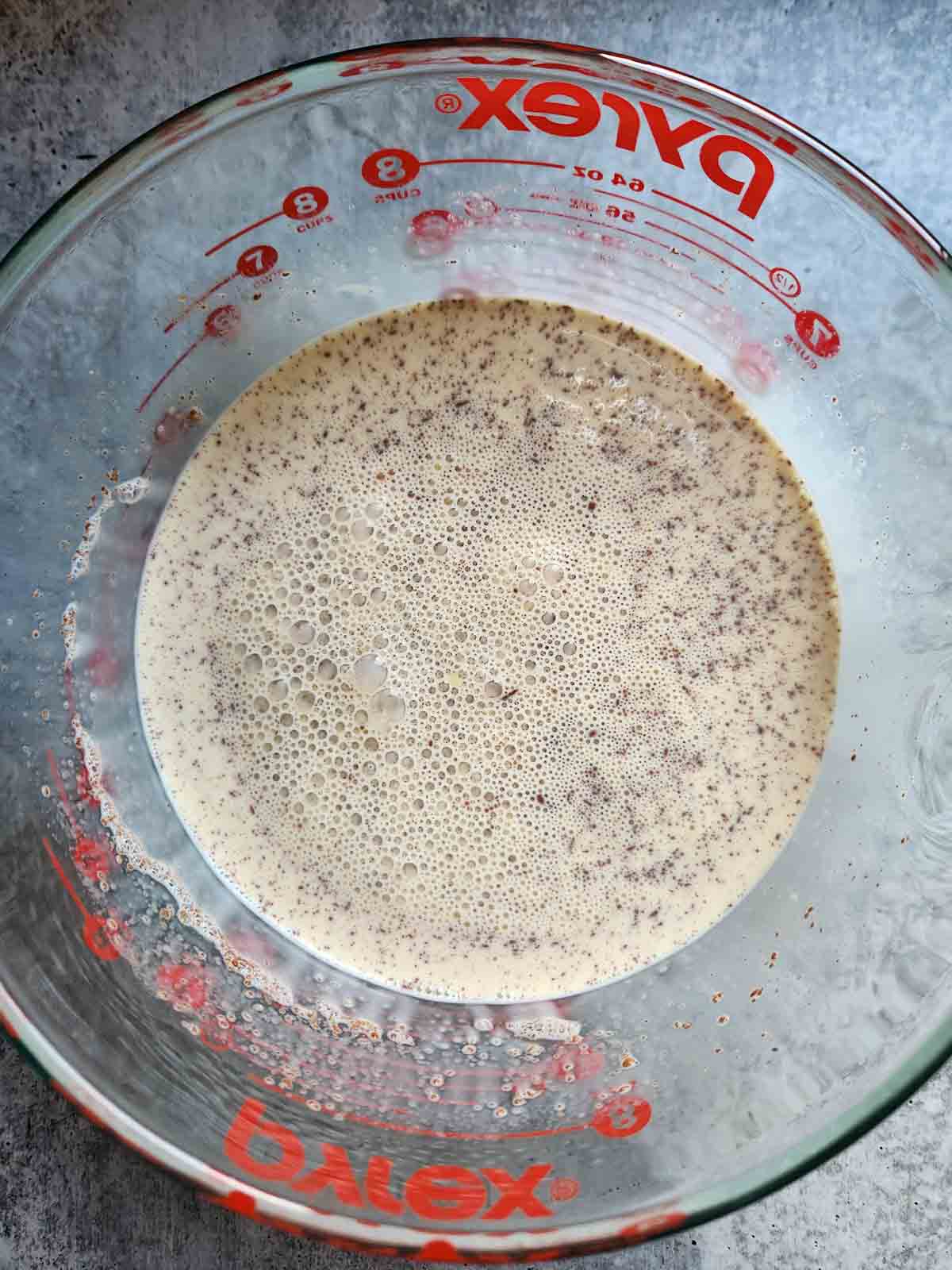
Step 1: Prepare Bread and Custard. Begin by preheating your oven to 350°F (175°C). Carefully slice your brioche bread diagonally, creating elegant, elongated pieces. Arrange these slices on a baking sheet and toast them in the oven for 6-8 minutes. This crucial step helps prevent sogginess. While the bread toasts, whisk together the eggs, half and half, sugar, vanilla, and all your warming spices in a medium-sized bowl until thoroughly combined and smooth. Ensure there are no lumps.
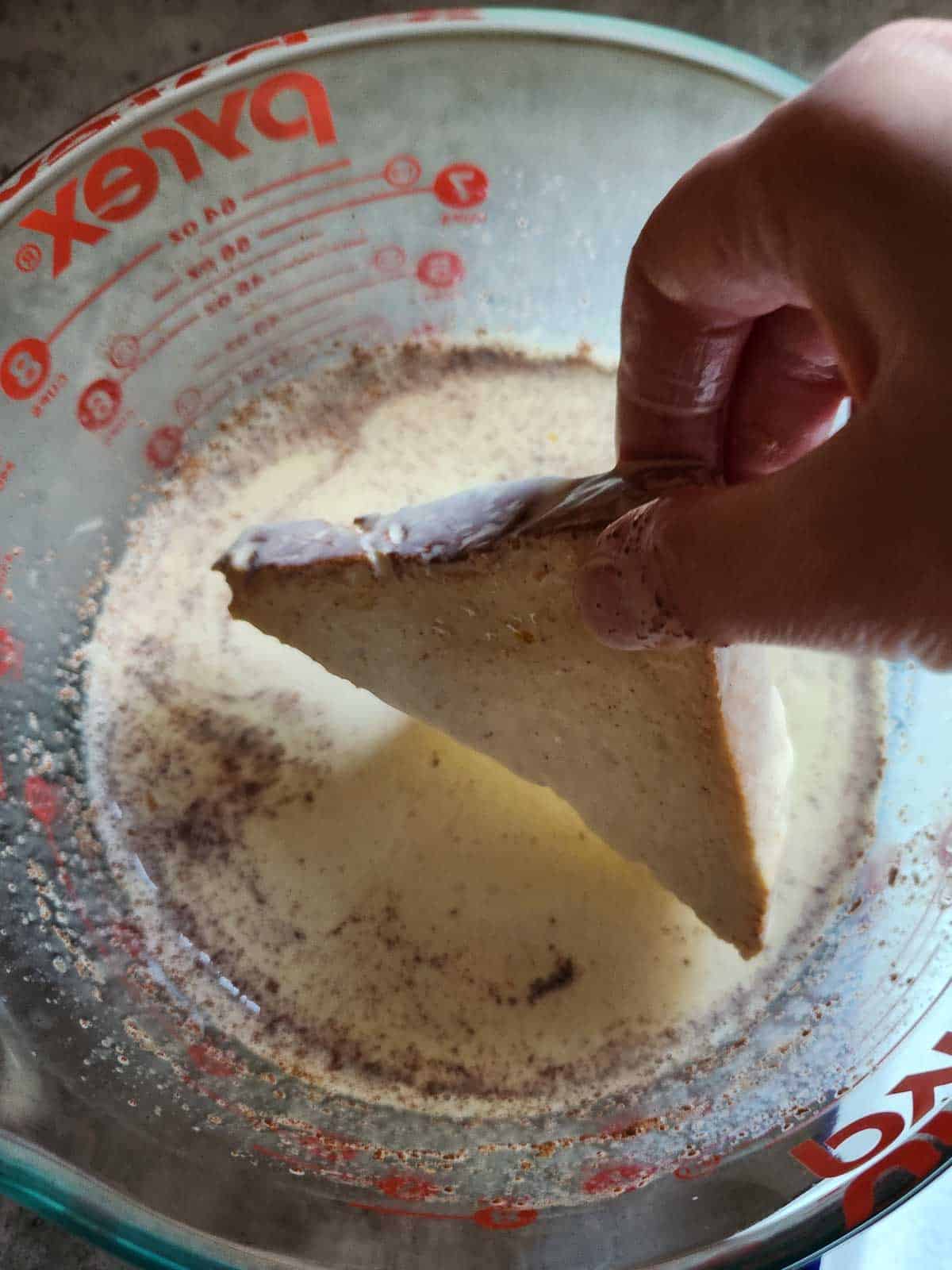
Step 2: Dip Each Slice. Take each toasted slice of brioche and briefly dip it into the prepared custard mixture. Aim for a quick dip on both sides – just enough to coat it thoroughly without allowing it to become oversaturated, which could lead to a soggy result. The goal is a perfect balance of absorbed custard and retained bread structure.

Step 3: Arrange in Pan. After dipping, arrange the brioche slices in your buttered 9×13 baking pan, laying them flat side down. Continue this process, overlapping the slices slightly to create an appealing, layered presentation. This overlapping method not only looks beautiful but also ensures even baking and a consistent texture throughout the casserole.
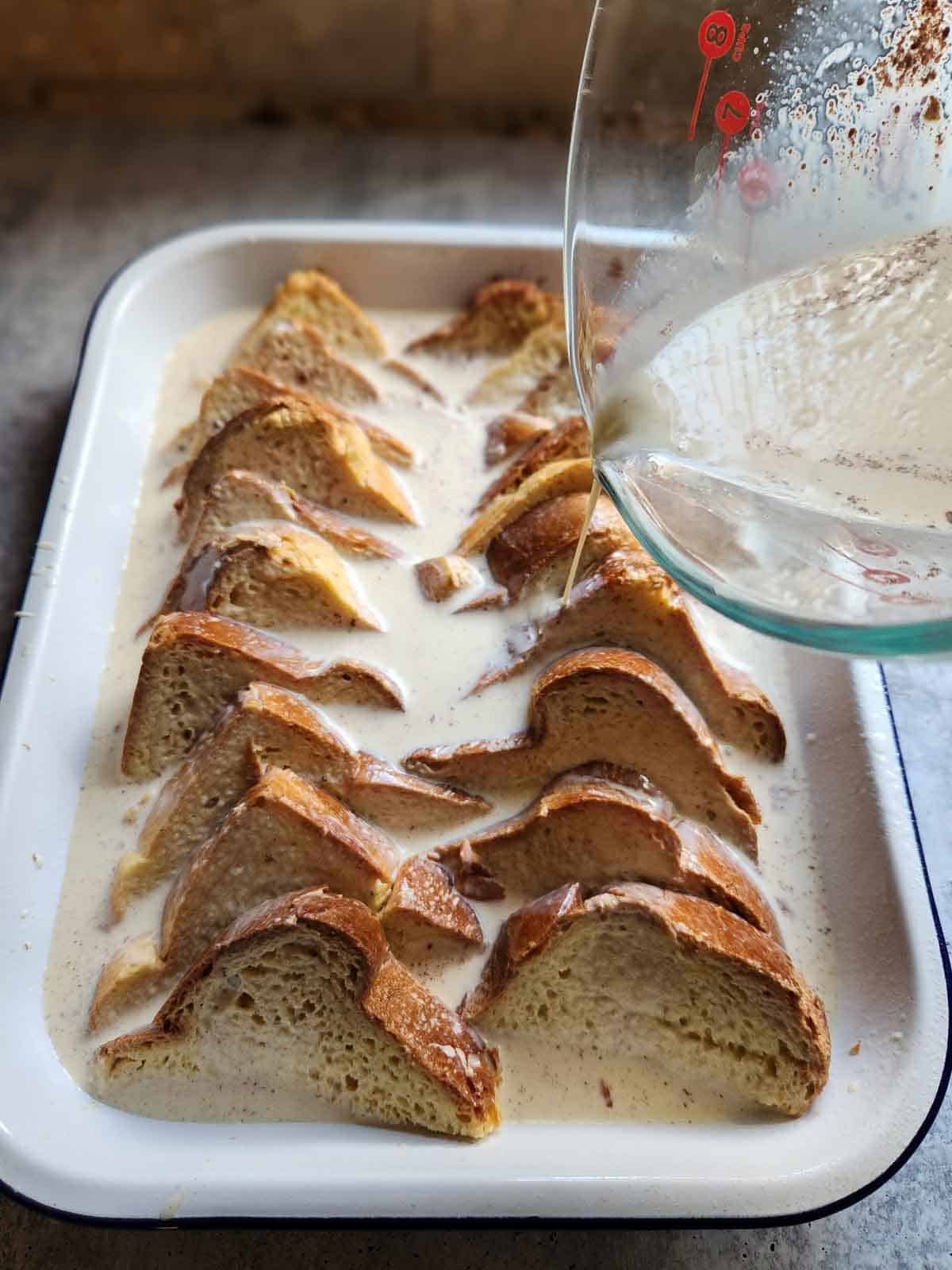
Step 4: Pour and Soak. Once all the bread slices are arranged, pour any remaining custard evenly over the entire pan. Cover the dish tightly with plastic wrap or aluminum foil. Now, let the magic happen! Allow the casserole to soak for a minimum of 2 hours, or for optimal flavor and texture, refrigerate it overnight. This extended soaking period ensures the brioche fully absorbs the rich custard, yielding an incredibly moist and flavorful French toast bake.
Before baking, remove the cover and generously sprinkle the turbinado sugar over the top. This will create a delightful, crunchy crust. Bake for 35-45 minutes until the casserole is beautifully puffed up and golden brown. Don’t worry if it deflates slightly upon cooling; that’s perfectly normal. Garnish with an abundance of fresh berries, a light dusting of powdered sugar, or a generous drizzle of warm maple syrup. Serve immediately with a dollop of butter for the ultimate breakfast indulgence.
👩🍳 Expert Tip for Perfect French Toast
To guarantee a spectacular, non-soggy French toast casserole, do not skip the step of pre-toasting or staling your bread. Brioche is naturally soft and buttery, and if used fresh, it can become overly mushy after soaking in the custard. By leaving the bread out overnight to stale slightly, or giving it a brief 6-8 minute toast in the oven, you create a firmer structure that can better absorb the custard without disintegrating. This ensures your casserole remains delightfully fluffy and holds its shape beautifully.
Substitutions and Creative Variations to Try
Don’t have a specific ingredient on hand, or simply want to experiment? This versatile baked French toast recipe is wonderfully adaptable. Here are some fantastic substitutions and variations to inspire your culinary creativity:
- Challah Bread: If brioche isn’t available, thick slices of challah bread make an excellent substitute. Challah, a Jewish braided bread, shares a similar rich, eggy, and slightly sweet profile with brioche, making it another ideal choice for absorbing custard without falling apart. You could also try other hearty, thick-sliced breads like a good artisan white loaf or Texas toast for a different texture.
- Spices: Feel free to customize the spice blend to your preference. Beyond cinnamon, cardamom, and nutmeg, consider adding a pinch of ground ginger for a warm kick, a hint of cloves for depth, or a touch of allspice for a festive twist. A dash of pumpkin pie spice blend would also be delightful, especially during autumn.
- Almond Flavor: For a delightful nutty note, incorporate a teaspoon of almond extract into the custard mixture. For extra texture and flavor, sprinkle sliced almonds over the casserole during the last 10-15 minutes of baking, or toast them lightly beforehand and add as a garnish.
- Citrus Zest: Brighten up your French toast by adding 1-2 teaspoons of finely grated lemon or orange zest to the custard. The citrus notes provide a lovely contrast to the richness and warmth of the spices, adding a fresh, aromatic dimension.
- Fresh Fruit Additions: Elevate your casserole with layers of fresh fruit. Blueberries, raspberries, or sliced strawberries can be layered between the brioche slices before pouring the custard, infusing the dish with burst of juicy sweetness as it bakes. Sliced bananas or peaches are also excellent options. For a decadent touch, you could even sprinkle in some chocolate chips or toasted pecans.
- Different Syrups & Toppings: While maple syrup is a classic, explore other topping options. Try a berry compote, a dollop of whipped cream, a drizzle of caramel sauce, or a sprinkle of toasted coconut flakes for added texture and flavor.
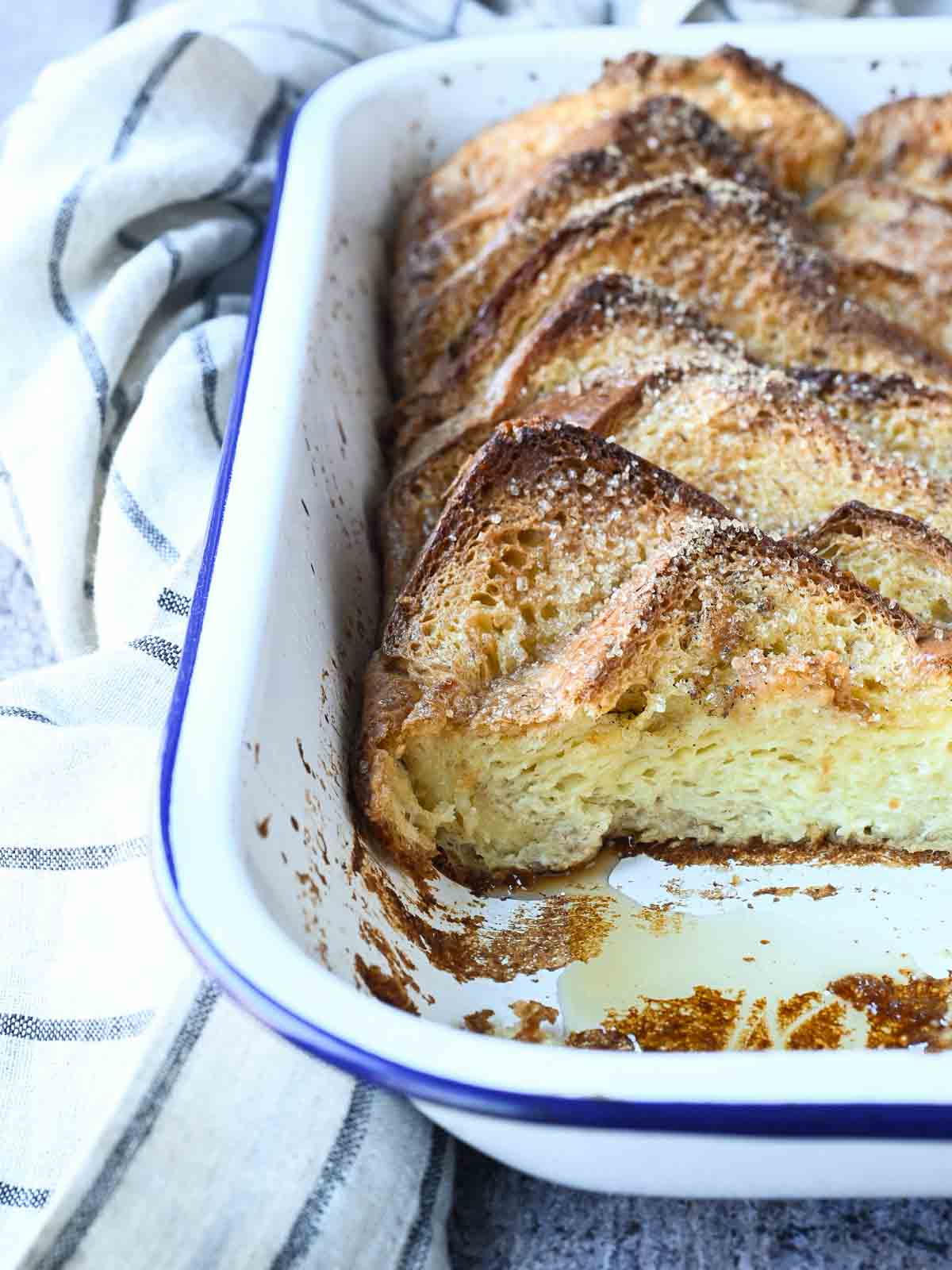
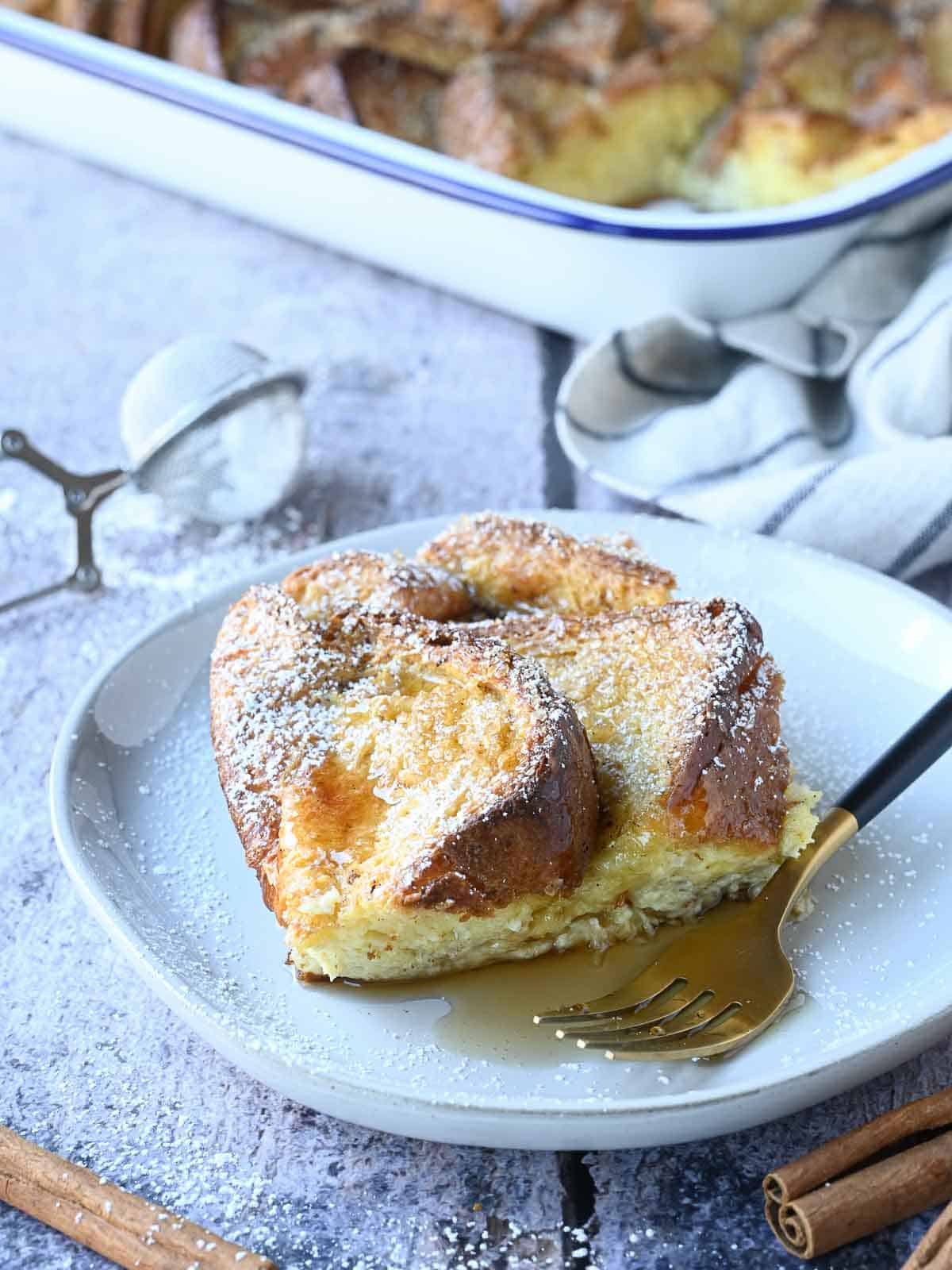
Make-Ahead and Storage Tips
One of the many benefits of this baked French toast casserole is its incredible make-ahead potential, making it perfect for stress-free entertaining or a leisurely morning. You can assemble the entire casserole, including the full overnight soak, up to 24 hours in advance. This means you wake up, preheat the oven, bake, and serve – giving you more time to enjoy with your loved ones.
Storage: Leftover baked French toast can be stored in the refrigerator for up to 5 days. To ensure it stays fresh and moist, cover the casserole dish tightly with plastic wrap or aluminum foil before storing. For individual portions, an airtight container works perfectly.
Reheating:
- Microwave: For quick reheating of single portions, place a slice or two on a microwave-safe plate and heat for 30-60 seconds, or until warmed through. Be careful not to overcook, as this can dry out the French toast.
- Oven: To reheat a larger portion or the entire dish, place the covered casserole in an oven preheated to 350°F (175°C) for about 10-15 minutes, or until it is heated through and slightly crisp again on top. Uncover for the last few minutes if you prefer a crispier crust.
- Freezing: This casserole also freezes beautifully! Once completely cooled, cut the French toast into individual servings. Wrap each piece tightly in plastic wrap, then again in aluminum foil. Store in a freezer-safe bag or container for up to 2-3 months. To reheat from frozen, unwrap and bake in a preheated oven at 350°F (175°C) for 20-30 minutes, or microwave until hot.
Frequently Asked Questions About Baked French Toast
Soggy French toast is often a result of using bread that is too fresh or over-soaking. Brioche is particularly soft, so it can easily absorb too much liquid. To avoid sogginess, ensure your brioche bread is slightly stale by leaving it out overnight, or by toasting it briefly in the oven for 6-8 minutes before dipping. This process hardens the bread just enough to give it more structure, allowing it to absorb the custard evenly without becoming mushy. Also, be mindful not to let the bread sit in the custard for too long during the initial dipping phase.
Absolutely! Frozen brioche can work wonderfully. Thaw the bread completely before slicing and proceeding with the recipe. In fact, thawing and then letting it sit out for a bit can naturally make it a little stale, which is ideal for this casserole. If it’s still very soft after thawing, give it a quick toast in the oven as recommended in our expert tip to ensure it has enough structure.
This recipe is designed for a standard 9×13 inch (23×33 cm) baking dish. This size allows for optimal layering of the brioche slices and ensures the French toast bakes evenly, achieving that perfect golden-brown crust and fluffy interior. If you use a smaller pan, you may need to adjust the amount of bread and custard, or divide the mixture into two smaller pans.
While the recipe calls for dairy-rich ingredients like half and half and brioche, you can certainly experiment with substitutions. For a dairy-free version, use unsweetened almond milk or coconut milk instead of half and half, and ensure your brioche is dairy-free (some brands exist). For gluten-free, look for a good quality, thick-sliced gluten-free brioche or challah-style bread. Keep in mind that the texture may vary slightly with these substitutions, but the flavor will still be delicious!
More Cozy Recipes We Think You Will Love
If you enjoyed the comforting warmth of this baked brioche French toast, you’re sure to adore these other cozy recipes, perfect for a lazy weekend or a comforting meal any day of the week!
- Slow Roasted Beefsteak Tomatoes
- Leftover Buttermilk French Toast
- Belgian Style Pumpkin Spice Waffles
- Crustless Zucchini Pie
Did you make this delightful recipe? I would absolutely love to hear about your experience! Please leave a ⭐⭐⭐⭐⭐ rating with a comment right below the recipe card. If you capture a photo of your beautiful creation, don’t forget to tag me on Instagram @brunchandbatter. Your feedback and photos truly inspire me!
📖 Recipe
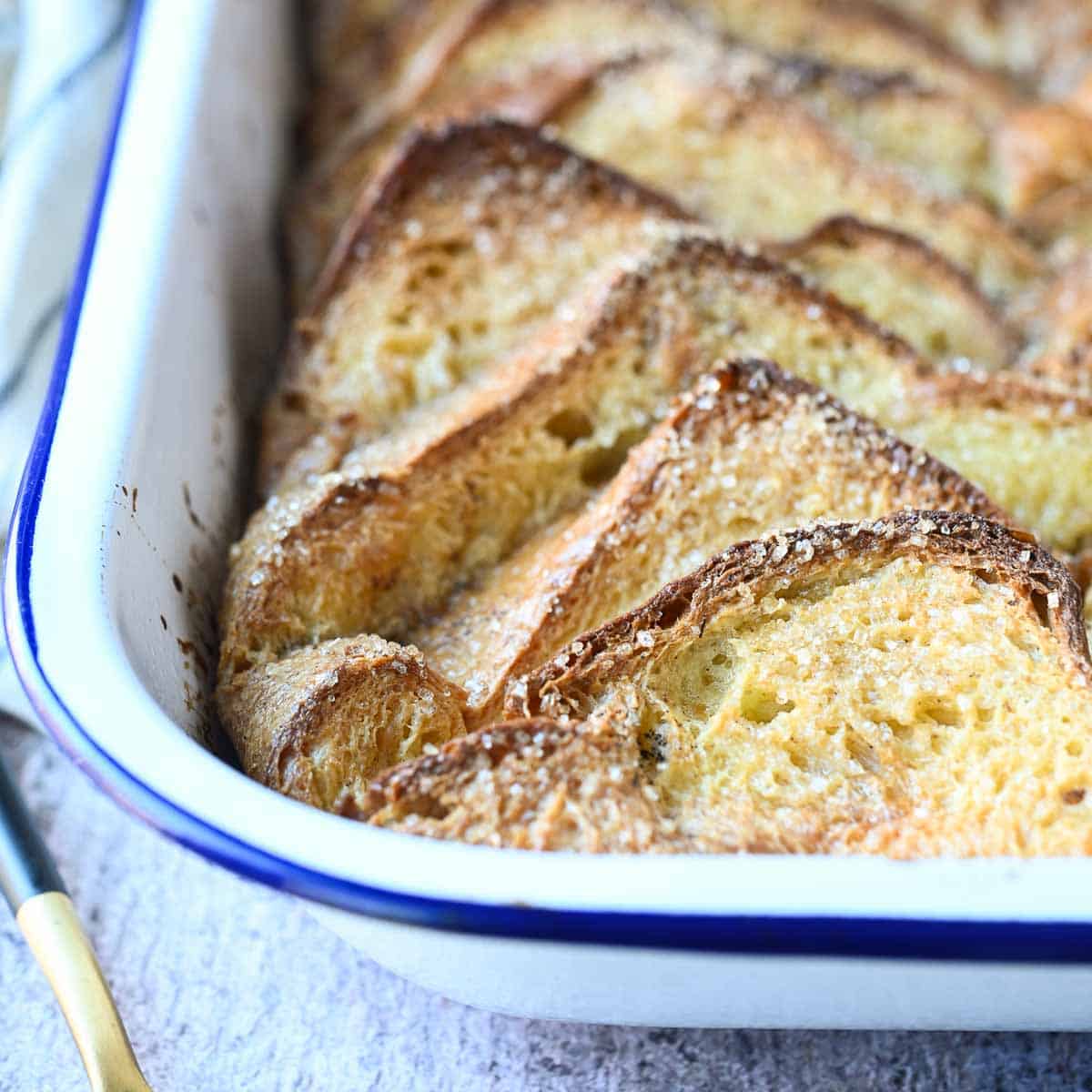
Baked Brioche French Toast Casserole
Prevent your screen from going dark
Pin Recipe
15 minutes
2 hours
2 hours
2 minutes
Breakfast, Brunch
American
8
401
kcal
Equipment
-
9 x13 baking dish
Ingredients
- butter for greasing the pan
-
1
pound (16 ounces)
brioche bread -
6
large
eggs -
2¾
cup (22 ounces)
half and half or milk -
¼
cup (2 ounces)
white granulated sugar -
2
teaspoon
vanilla bean paste or vanilla extract -
1
teaspoon
cinnamon -
¼
teaspoon
ground cardamom -
½
teaspoon
freshly ground nutmeg -
2
tablespoon
turbinado sugar (Sugar in the Raw)
Instructions
-
Preheat the oven to 350℉ (175°C). Slice the brioche bread diagonally and place on a baking sheet to crisp up in the oven for 6-8 minutes. Meanwhile, generously grease a 9×13 inch baking pan with butter and set aside. This step helps prevent sogginess.butter for greasing the pan,
1 pound (16 ounces) brioche bread -
In a large bowl, whisk together the eggs, half and half (or milk), white granulated sugar, vanilla bean paste (or extract), cinnamon, ground cardamom, and freshly ground nutmeg until the mixture is smooth and well combined.6 large eggs,
2¾ cup (22 ounces) half and half or milk,
¼ cup (2 ounces) white granulated sugar,
2 teaspoon vanilla bean paste or vanilla extract,
1 teaspoon cinnamon,
¼ teaspoon ground cardamom,
½ teaspoon freshly ground nutmeg -
Dip each toasted slice of brioche into the egg mixture for a few seconds per side, ensuring it’s well coated but not oversaturated. Arrange the dipped slices in the greased pan, laying them flat side down and overlapping them slightly for a beautiful presentation. Once all slices are arranged, pour any remaining custard evenly over the bread. Cover the pan tightly and refrigerate to let it soak for a minimum of 2 hours, or ideally, overnight, for maximum flavor absorption.
-
When you’re ready to bake, preheat your oven to 350℉ (175°C). Remove the cover from the casserole dish and evenly sprinkle the turbinado sugar over the top. Bake for 35-45 minutes, or until the French toast is beautifully puffed up, golden brown, and cooked through. It will naturally deflate slightly upon cooling. Let it cool for a few minutes before serving warm with your favorite toppings such as maple syrup, a dollop of butter, and/or a dusting of powdered sugar.2 tablespoon turbinado sugar (Sugar in the Raw)
Notes
- Don’t skip the step of toasting the bread. Since brioche is so soft, it can get mushy after soaking in the custard. Leaving the bread out overnight or toasting it briefly in the oven for 6-8 minutes will give your casserole more structure and prevent it from becoming too soggy.
- Baked French toast can be stored in the refrigerator, covered tightly, for up to 5 days. To reheat, place single portions in the microwave or place the entire dish (covered) in the oven at 350°F (175°C) for about 10-15 minutes until heated through.
Nutrition*
Serving:
1
g
Calories:
401
kcal
Carbohydrates:
49.6
g
Protein:
13.2
g
Fat:
15.3
g
Saturated Fat:
7.1
g
Cholesterol:
170
mg
Sodium:
427
mg
Potassium:
162
mg
Fiber:
2.2
g
Sugar:
13.9
g
Calcium:
311
mg
Iron:
3
mg
*Nutrition information is provided as a courtesy and is an estimate only. Nutrition information can vary depending on many factors, such as products used, measurements and substitutions, therefore it is recommended that you obtain nutritional calculations based on your own finished recipe.
Have you tried this recipe?
Leave a comment below and share a photo on Instagram. Tag @brunchandbatter or hashtag it with #brunchandbatter
